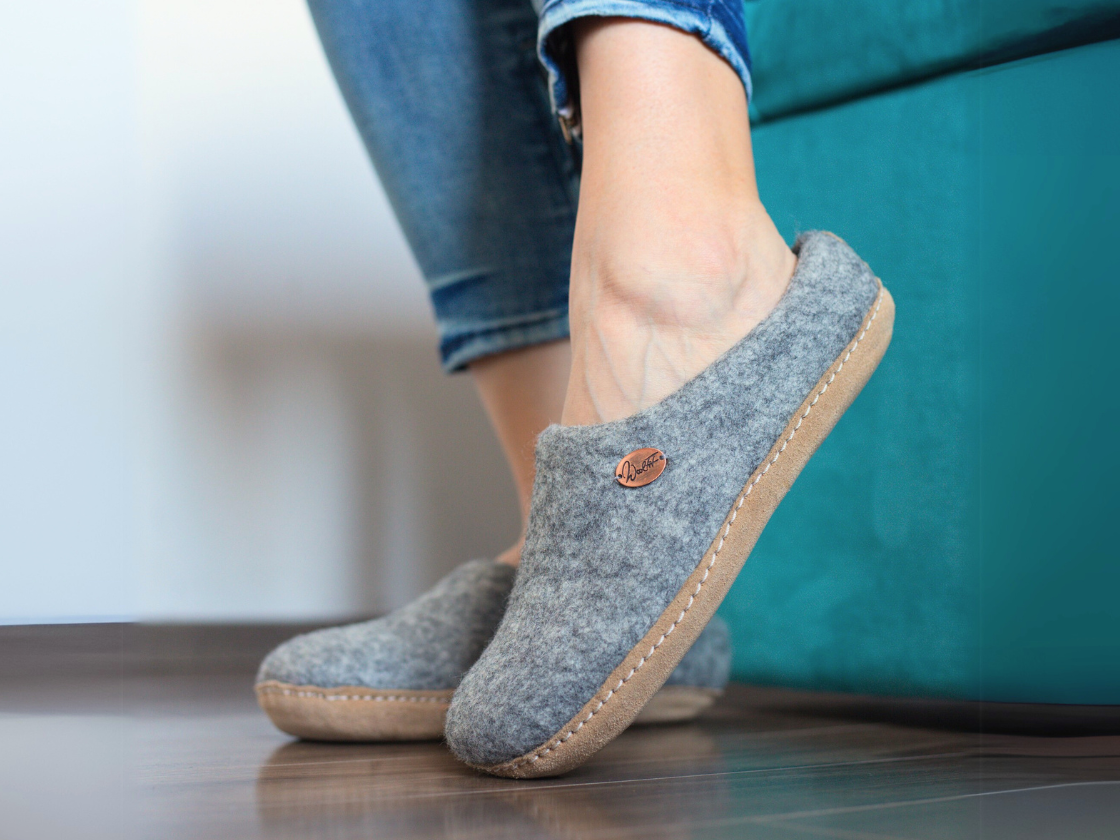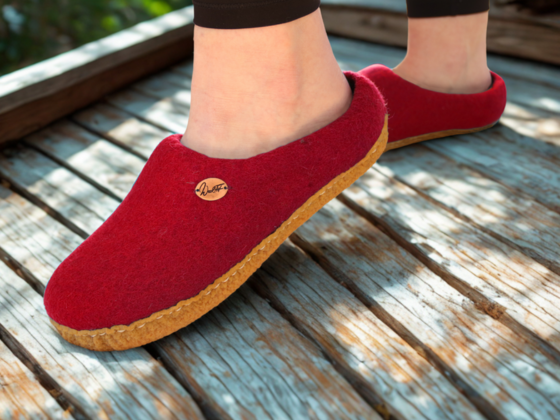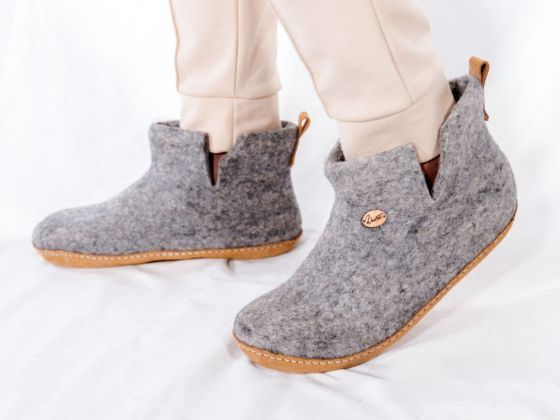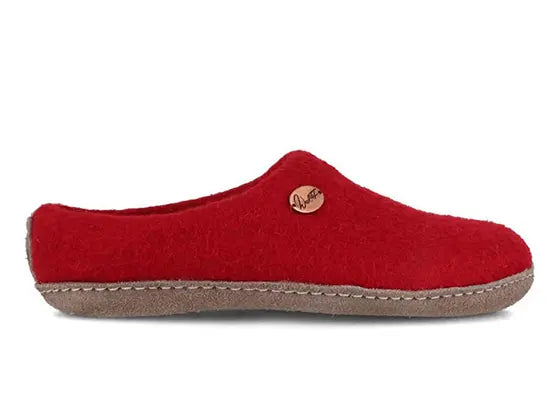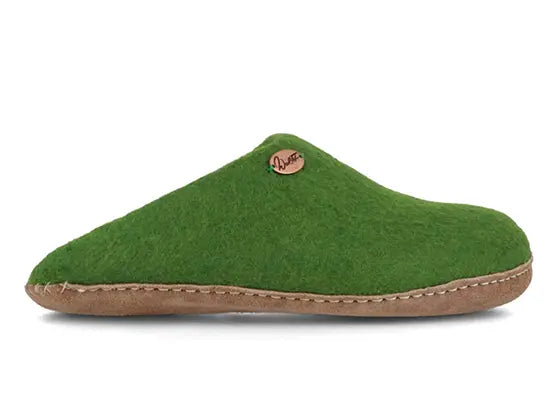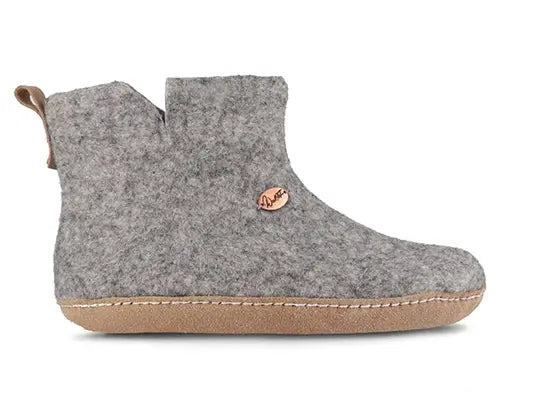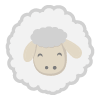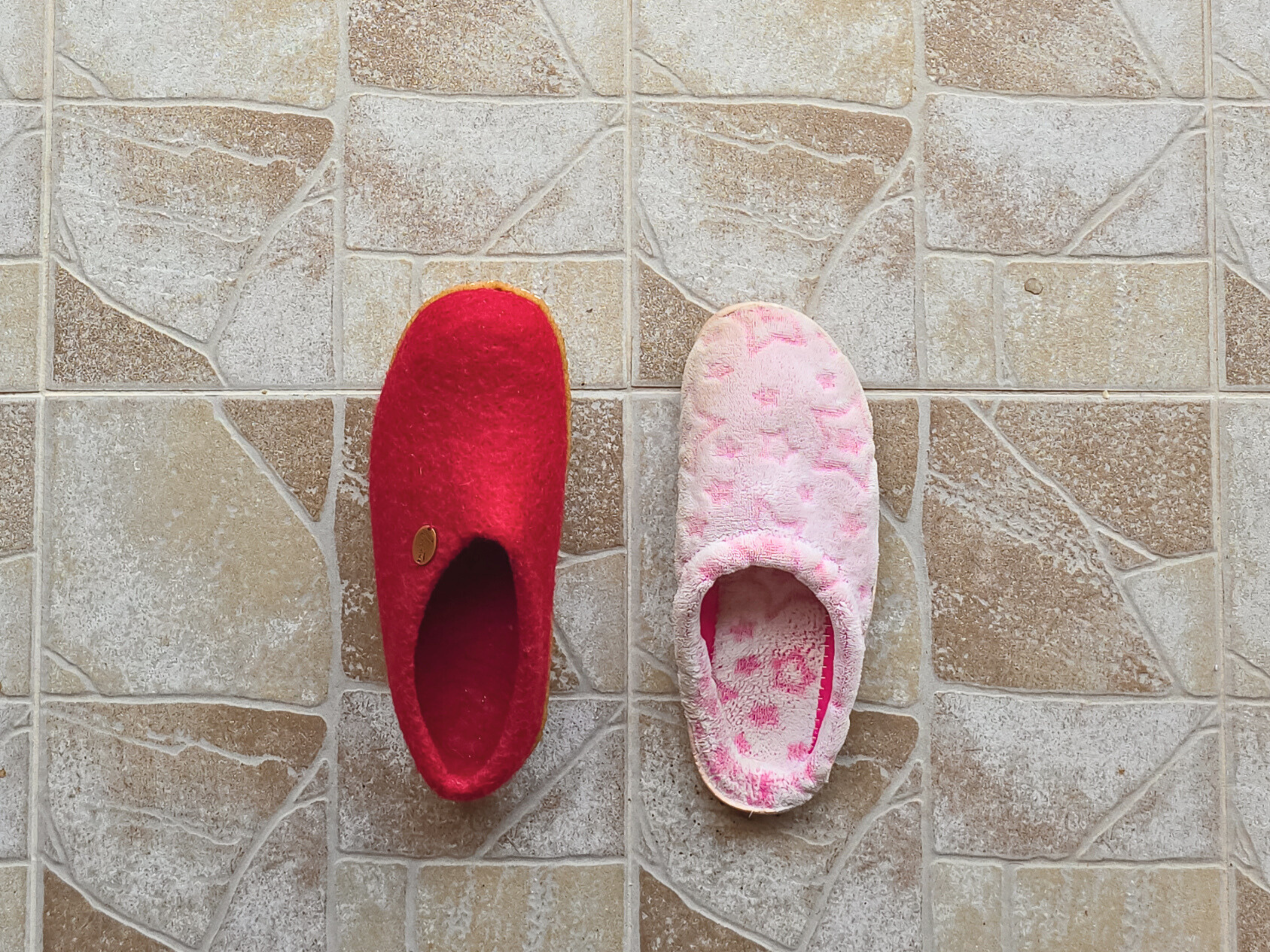The nature of human health is thought to be affected by the environment. Factors such as air quality, temperature and humidity, landscape, water sources, and the general condition of a region are considered essential for a healthy population.
— What if we talk about foot health?
While your comfort is the most important factor when choosing slippers for yourself, there is another aspect that is often ignored: health.
These days, we see a lot of foot problems.
— Have you ever wondered why are people buying and wearing the same low-quality footwear even if they already have foot problems?
Slippers are a common type of footwear found at home and in hotels. They are usually made of wool, synthetic materials, or other fabric besides leather. It is easy to recognize people wearing slippers by the sound they make because of the material they are made of.
But what can happen when people wear slippers from low-quality materials?
-
Sweaty feet — Synthetic materials tend to trap heat and moisture, causing sweaty and uncomfortable feet.
-
Fungal infections — Bacteria, fungi, and algae thrive in moist environments, creating problems for human feet. Moisture also weakens the skin on our feet, allowing infections to take hold more easily.
-
Odor — Synthetic slippers are prone to foot odor because of the combination of the moisture trapped inside the slippers and the ideal environment for bacteria.
-
Allergic reactions — Contact dermatitis generally occurs when a person comes in contact with a substance or an object that causes irritation to his skin. When this happens, the immune system starts reacting to the substance and causes inflammation in the skin.
-
Lack of breathability — When feet are kept warm using slippers made of synthetic materials, your body can no longer rely on a natural method to regulate temperature. The lack of airflow in your shoes, combined with the inability to regulate your own temperature, is a recipe for disaster.
-
Poor fit — When you wear synthetic slippers that do not fit properly, they can cause some issues in the form of blisters or calluses. On the other hand, natural materials, like wool and leather, are not only comfortable to wear, but they also conform to the shape of your foot.
So, what benefits will wool slippers bring to us?
-
Wool is a natural material, and its eco-friendly, anti-bacterial, and mildew-resistant characteristics make it very popular in slippers. More important, wool shoes are soft in the bottom line, which not only soothes the soles of the feet but also can effectively eliminate pressure points to some extent. Its special structure, due to which it absorbs moisture and gets wet slowly, retains heat and prevents cooling of the foot with time, causes a constant exchange of warm air in contact with skin. Wool absorbs moisture from the outer layer of the skin, draws heat from it, and gradually releases it into the atmosphere, which allows you to feel warm and dry for a long time after getting out of bed.
In order to choose the comfortable and suitable pair of slippers, we have to know all the direct impacts on the health they make. Let’s immerse ourselves in this topic more deeply!
Temperature Regulation Benefits of Wool Slippers
Wool is known for its insulating properties due to the multi-layer construction of the fiber. Wool fibers are made up of two layers — 1) an outer layer of scales and 2) an inner layer of keratin that keeps the wool's warmth in and moisture out.
-
The outer layer of the wool fiber is called the cuticle. Its protective role allows a wool fiber to withstand harsh conditions, and continue to be warm and soft even when wet. The scales that you can see on the outside of your slippers, pull any moisture away from your skin.
Source: SpinOff
-
The inner layers are made up of a protein called keratin, which is responsible for the insulating properties of wool. It contains tiny air pockets which help trap and retain heat, unlike synthetic fibers, which are always heated from the outside.
Source: ResearchGate
The scales and keratin overlap to create a strong material that is able to maintain its shape when wet.
The main difference between wool and synthetic fibers is the size of the fiber itself. Wool fibers are much larger in diameter than synthetic fibers, meaning that more air can easily pass through a wool fiber than through a synthetic one, which results in a better insulating effect.
Source: WoolMark
-
Wool's natural crimpiness helps retain heat
As we’ve already found out, wool is a natural insulator that helps regulate temperature, which means it can keep your feet warm without making them too hot. This occurs through trapping and holding air in pockets that help prevent heat from escaping. Because the fibers are microscopically intertwined, they don't collapse when pressed, as cotton does. This means the wool fabric can create a more effective barrier against the cold.
How wool regulates temperature:
Wool provides both insulation and air circulation. When the temperature drops, the wool fibers trap more air, creating an insulating layer. As the temperature rises, the wool fibers release the trapped air, cooling your feet from within. Wool insulates your body without adding excess bulk or constricting movement, allowing proper blood flow and perspiration to maintain normal skin temperature.
The fiber's ability to regulate temperature — to keep a person warm without causing heatstroke — makes it an excellent material for keeping feet warm without sweating.
The classic example: you can wear woolen socks in the winter and not worry about feeling clammy and wet, as you might with cotton socks.
This can help you to maintain your comfortable body temperature — even in cold weather conditions. Whether hiking in frigid conditions or just out walking your dog in the morning, wool feels comfortable and provides an amazing amount of warmth you won't find in other fabrics.
-
Keeps feet warm even when wet
— If you spend a lot of time outdoors during the winter, or catch colds and illnesses frequently, there are steps you can take to avoid having frozen toes. One of these is to plant your feet in warm wool slippers when the temperature drops.
When shoes get wet, it can really cause discomfort and coldness that can lead to frostbite. Wool is just as effective when it's wet as when it's dry, which means moisture will not cause your wool slippers to lose their insulating properties. This is because the tiny fibers are coated in natural oils, which repel water and help them keep warmth trapped inside.
Wool fibers are hollow, which means that air travels through them easily. This also means that when wool gets wet, it will stay warm for a long time because heat cannot escape as quickly as it can from other materials such as cotton or synthetic fibers.
Moisture-wicking properties of wool slippers
The natural moisture-wicking properties of wool can't be beaten by other fabrics!
Wool is the fiber produced by sheep and comprises of the hair surrounding their skin. Its natural moisture-wicking properties mean it can absorb 30% of its own weight without feeling wet, plus it regulates temperature as if it's acting like a natural thermostat.
Wool fibers are naturally hydrophilic, repelling water and then transmitting moisture through the fabric. This aspect of woolen apparel fibers is beneficial in warm weather because it opens up tiny spaces between the surrounding outside air and the body. Airflow helps to prevent our core temperature from rising above optimal levels while also preventing us from feeling too hot.
-
Releases moisture through evaporation
Wool absorbs moisture and releases it through evaporation – similar to perspiration. Worn properly, wool is effective at keeping your temperature regulated. When this moisture evaporates from the surface of the wool it removes heat from your body and keeps you feeling comfortable.
Wool fibers are naturally hydrophilic (water-loving) and store moisture by attracting and retaining it in the structure of the fiber itself, instead of wetting and swelling like cotton. It can absorb up to 30 percent of its weight in moisture while still maintaining near 100 percent of its thermal insulation properties. The reason for this phenomenon — called “wicking”— is due to the structure of individual wool fibers and how they're tightly packed together.
Wool has a natural ability to channel moisture away from the body. Its fibers have microscopic scales that latch onto the water and pull the water vapor away from the body. In addition, its moisture-releasing properties allow it to evaporate sweat via its large surface area, even when it is not breathable.
The result is that no matter how much warmth is generated by your feet during exercise (or other daily endeavors), it will not be trapped by the slippers, thus ensuring that you keep cool throughout your day.
-
Reduces the growth of bacteria and fungi
Wool is one of the only materials that are naturally able to prevent odor. It releases moisture through evaporation, so if you sweat a lot but don't want to risk smelling musky, wool slippers can be the way to go.
When your feet perspire in wool slippers, the fibers act as a wick and draw the moisture off your feet. The unique structure of wool fiber allows moisture to spread through its surface area creating a large surface to absorb and reach evaporation levels much more quickly than any other fiber.
-
By absorbing moisture from the foot, it helps to keep bacteria and fungi from building up. These microorganisms can cause foot odor, infections, and other foot-related issues.
-
The keratin in wool also helps to maintain the skin's natural moisture barrier, fighting off nasty bacteria and fungi that thrive in moist environments.
-
By keeping your feet dry and odor-free, wool can help reduce the risk of foot ailments such as athlete's foot and toenail infections, among other foot disorders.
Note: wool fibers are primarily composed of keratin, a protein that helps to keep hair and nails strong.
Other health benefits of wearing wool slippers
-
For people with circulation issues
If you have circulation issues, you know how important it is to keep your feet as warm and dry as possible.
Throughout the winter, people who suffer from cold feet and toes need to wear a pair of good wool socks to prevent chilblains and foot damage. They are best suited for individuals who suffer from Raynaud's disease, which is a circulation disorder characterized by the hands and fingers turning white and blue due to poor blood flow. Wool slippers benefit people with poor circulation by drawing in the heat from their feet.
Wool has a natural ability to insulate, which is believed to reduce one's risk for circulation problems. Wool socks, slippers, and other types of clothing work to insulate the wearer's body which, in effect, helps the wearer keep his or her blood flowing freely.
Note: A major finding from the study of heat-sensitive populations in deprived areas is that people who wore warm clothing for a large part of the year tended to be healthier. The health benefit was due to a better circulation function, both of extremities and organs.
-
Can help reduce swelling and inflammation
If you ever find your feet becoming swollen or inflamed, consider repurposing a pair of wool slippers for a temporary solution to the problem. Not only will wool slippers keep your feet warm, but they’ll also help fight inflammation and stress on the body. Natural fibers have a unique ability to stimulate blood flow, encourage circulation, and reduce swelling and inflammation caused by excessive pressure points. The natural elasticity of wool helps to alleviate pressure points on the feet and reduce the degeneration of tendons and ligaments.
Note: Wool has also been found to have a calming effect on the nervous system. This can help to reduce stress and anxiety, which can contribute to inflammation and swelling in the body. With a reduction in anxiety and stress, people also reported an improvement in circulation, which is beneficial for overall health.
Let’s sum it up!
Climbing into a pair of wool slippers can give you all sorts of benefits. Wool slippers can be very beneficial in reducing the risk of skin conditions. It is able to wick away sweat and moisture from the foot, which reduces the chance that bacteria will breed and cause odor-causing foot conditions.
Moreover, since wool is naturally insulating, it works very well at protecting your feet against the cold and regulating body temperature. The wool fibers used in slippers are able to trap air and form a natural insulation barrier against both heat loss and gain. It is a versatile material that can regulate temperature and keep your feet at the right temperature.
When it comes to selecting comfortable footwear, there are a number of features you should be looking out for in order to make sure your feet are kept healthy and supported. Well, bone up on all of the aforementioned and go shopping!


